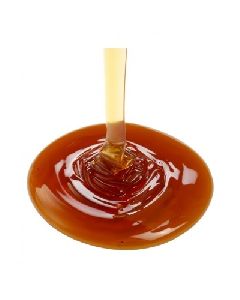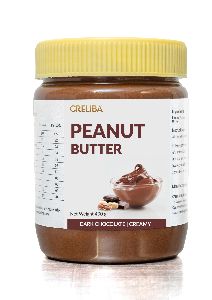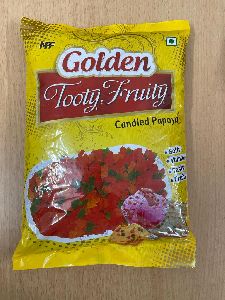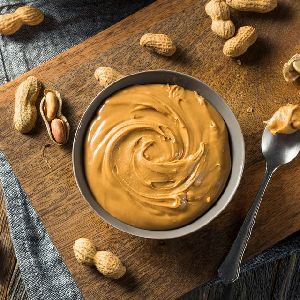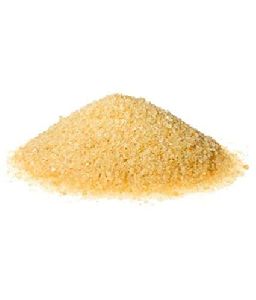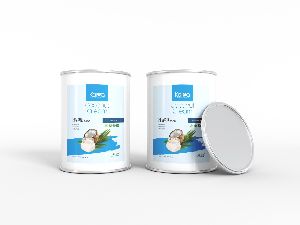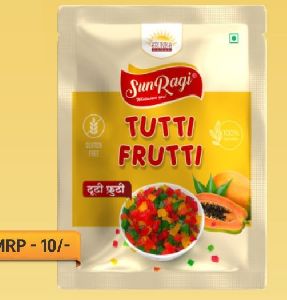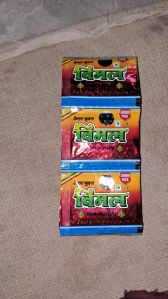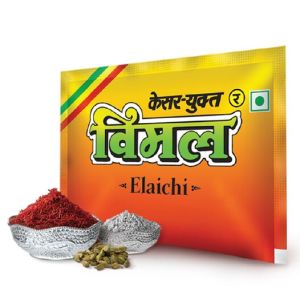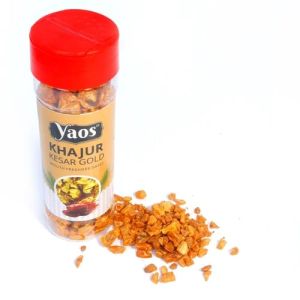Listing ID #819724
Company Information
Ask for more detail from the seller
Contact SupplierWe are offering flour. we are khedut agro overseas offered by flour and we are manufacturing & exporter. Our manufactur plang is largest and flour mill is 50 ( flour machine ). types of flour items : 1. Wheat flour 2. Rice flour 3. Maize flour 4. Chickpeas flour ( besan ) all flour is in details : 1. Wheat flour : wheat flour is a powder made from the grinding of wheat used for human consumption. More wheat flour is produced than any other flour.[not verified in body] wheat varieties are called “clean”, “white”, “brown” or “hard” if they have high gluten content, and they are called “soft” or “weak” flour if gluten content is low. Hard flour, or bread flour, is high in gluten, with 12% to 14% gluten content, and has elastic toughness that holds its shape well once baked. Soft flour is comparatively low in gluten and thus results in a finer or crumbly texture. Soft flour is usually divided into cake flour, which is the lowest in gluten, and pastry flour, which has slightly more gluten than cake flour. in terms of the parts of the grain (the grass fruit) used in flour—the endosperm or proteinstarchy part, the germ or proteinfatvitamin-rich part, and the bran or fiber part—there are three general types of flour. White flour is made from the endosperm only. Whole grain or wholemeal flour is made from the entire grain, including the bran, endosperm, and germ. Germ flour is made from the endosperm and germ, excluding the bran. during world war ii, the british government promoted “national flour”; it was adopted in 1942 both for health reasons and those concerned about the import of wheat into the uk and losses during the war. The flour is described as being of 85% extraction, i.e. Containing more of the whole wheat grain than refined flour, generally described as 70% extraction at the time. Parliamentary questions on the exact constitution of national flour in 1943 reveal that it was “milled from a grist consisting of 90 per cent. Wheat and 10 per cent. Diluent grains. Authorised additions are calcium at the rate of 7 oz. Per 280 lb. Of flour and dried milk at the rate of 2 lb. Per 280 lb. Of flour and customary improvers in normal proportions.” the diluent grains were barley, oats and rye and customary improvers were “certain oxidising agents which improve the quality of the bread baked from the flour, and their nature depends on the kind of grain used, whether hard or soft.”. A survey of the composition of national flour was conducted for the period 1946-1950 national flour was discontinued in 1956 against the recommendations of the mrc as the government considered that the addition of nutritional supplements to refined flour removed the necessity for using national flour on health grounds. all-purpose or plain flour is a blended wheat flour with a protein content lower than bread flour, ranging between 9% and 12%. Depending on brand or the region where it is purchased, it may be composed of all hard or soft wheats, but is usually a blend of the two, and can range from low protein content to moderately high. It is marketed as an inexpensive alternative to bakers’ flour which is acceptable for most household baking needs. bleached flour is a white flour treated with flour bleaching agents to whiten it (freshly milled flour is yellowish) and give it more gluten-producing potential. Oxidizing agents are usually employed, most commonly organic peroxides like acetone peroxide or benzoyl peroxide, nitrogen dioxide, or chlorine. A similar effect can be achieved by letting the flour oxidize with oxygen in the air (“natural aging”) for approximately 10 days; however, this process is more expensive due to the time required. Flour bleached with benzoyl peroxide has been prohibited in the uk since 1997. bread flour or strong flour is always made from hard wheat, usually hard spring wheat. It has a very high protein content, between 10% and 13%, making it excellent for yeast bread baking. It can be white or whole wheat or in between. bromated flour has a maturing agent added. The agent’s role is to help with developing gluten, a role similar to the flour bleaching agents. Bromate is usually used. Other choices are phosphates, ascorbic acid, and malted barley. Bromated flour has been banned in much of the world, as bromate is classified as possibly carcinogenic in humans (group 2b) by the international agency for research on cancer (iarc), but remains available in the united states. cake flour is a finely milled white flour made from soft wheat. It has very low protein content, between 8% and 10%, making it suitable for soft-textured cakes and cookies. The higher protein content of other flours would make the cakes tough. Highly sifted cake flours may require different volume amounts in recipes than all-purpose flour. Using the scoop and level method, well-sifted flour usually produces 125 g per cup. However, most american recipes are written with 140 g of flour per cup, so weighing and experimentation can be helpful in baking unfamiliar recipes. Small weight differences can greatly affect the texture. American cake flour is bleached; in countries where bleached flour is prohibited, plain flour can be treated in a domestic microwave to improve the texture of the end product. Related to cake flour are masa harina (from maize), maida flour (from wheat or tapioca), and pure starches. graham flour is a special type of whole wheat flour. The endosperm is finely ground, as in white flour, while the bran and germ are coarsely ground. Graham flour is uncommon outside of the us (but see atta flour, a similar product, below). Graham flour is the basis of true graham crackers. Many graham crackers on the market are actually imitation grahams because they do not contain graham flour or even whole-wheat flour. instant flour is pregelatinized (precooked) for easier incorporation in gravies and sauces. pastry flour or cookie flour or cracker flour has slightly higher protein content than cake flour but lower than all-purpose flour. Its protein content ranges between 9% and 10%. It is available as a white flour, a whole-wheat flour, or a white flour with the germ retained but not the bran. It is suitable for pie pastry and tarts, some cookies, muffins, biscuits and other quick breads. Flour is shaken through a sieve to reduce the amount of lumps for cooking pastry. 2.rice flour : rice flour is a fine flour made from ground rice. It is completely gluten free, including even “glutinous rice flour,” which is made from sweet rice and is a staple for making japanese treats like mochi. Rice flour can be used in a wide variety of culinary uses and is a very popular base for noodles in many asian cuisines. It can also be used as a thickener in sauces, as a breading for fried dishes and as the base for various baked goods. It is available in white, which is made from polished white rice, and in brown, which is made from whole grain brown rice. Both types of flour work just about the same way in a recipe, but have slightly different flavors and colorings. Brown rice flour can take longer to cook when it is in noodle form, for instance, as brown rice takes longer to cook than white rice. rice flour is very commonly used in gluten free baked goods to give them structure and substance, but it is also a popular addition for non gluten free baked goods because of its unique and slightly sandy texture. For instance, a small amount of white rice flour in a buttery shortbread recipe can make that shortbread extra tender and crumbly, with a melt-in-your-mouth feeling. It can also add a heartiness to a yeast bread recipe when a small amount is added, since it contains no gluten and will compact a bread dough somewhat, so it can be found in some dense, whole grain breads. rice flour (also rice powder) is a form of flour made from finely milled rice. It is distinct from rice starch, which is usually produced by steeping rice in lye. Rice flour is a particularly good substitute for wheat flour, which causes irritation in the digestive systems of those who are gluten-intolerant. Rice flour is also used as a thickening agent in recipes that are refrigerated or frozen since it inhibits liquid separation. in japanese, rice flour is called komeko and is available two forms: glutinous and non-glutinous. The glutinous rice is also called sweet rice, but despite its name it is neither sweet nor does it contain gluten; the word glutinous is used to describe the stickiness of the rice when it is cooked. The non-glutinous variety called shinko is made from short-grain rice and is primarily used for creating confectioneries. Mochigomeko is produced from ground cooked glutinous rice and is used to create mochi (pictured) or as a thickener for sauces. Another variety called shiratamako is produced from ground uncooked glutinous rice and is often used to produce confectioneries. 3. Maize flour : maize known in some english-speaking countries as corn, is a large grain plant domesticated by indigenous peoples in mesoamerica in prehistoric times. The leafy stalk produces ears which contain the grain, which are seeds called kernels. Maize kernels are often used in cooking as a starch. most historians believe corn was domesticated in the tehuacan valley of mexico. The olmec and mayans cultivated it in numerous varieties throughout mesoamerica, cooked, ground or processed through nixtamalization. Beginning about 2500 bc, the crop spread through much of the americas. The region developed a trade network based on surplus and varieties of maize crops. After european contact with the americas in the late 15th and early 16th centuries, explorers and traders carried maize back to europe and introduced it to other countries. Maize spread to the rest of the world because of its ability to grow in diverse climates. Sugar-rich varieties called sweet corn are usually grown for human consumption, while field corn varieties are used for animal feed and as chemical feedstocks. maize is the most widely grown grain crop throughout the americas, with 332 million metric tons grown annually in the united states alone. Approximately 40% of the crop — 130 million tons — is used for corn ethanol. Genetically modified maize made up 85% of the maize planted in the united states in 2009. ears develop above a few of the leaves in the midsection of the plant, between the stem and leaf sheath, elongating by[citation needed] ~ 3 mmday, to a length of 18 cm (7 in) (60 cm24 in being the maximum observed in the subspecies ). They are female inflorescences, tightly enveloped by several layers of ear leaves commonly called husks. Certain varieties of maize have been bred to produce many additional developed ears. These are the source of the “baby corn” used as a vegetable in asian cuisine. the apex of the stem ends in the tassel, an inflorescence of male flowers. When the tassel is mature and conditions are suitably warm and dry, anthers on the tassel dehisce and release pollen. Maize pollen is anemophilous (dispersed by wind), and because of its large settling velocity, most pollen falls within a few meters of the tassel. elongated stigmas, called silks, emerge from the whorl of husk leaves at the end of the ear. They are often pale yellow and 7 in (178 mm) in length, like tufts of hair in appearance. At the end of each is a carpel, which may develop into a “kernel” if fertilized by a pollen grain. The pericarp of the fruit is fused with the seed coat referred to as “caryopsis”, typical of the grasses, and the entire kernel is often referred to as the “seed”. The cob is close to a multiple fruit in structure, except that the individual fruits (the kernels) never fuse into a single mass. The grains are about the size of peas, and adhere in regular rows around a white, pithy substance, which forms the ear (maximum size of kernel in subspecies is reputedly 2.5 cm1 in [16]). An ear commonly holds 600 kernels. They are of various colors: blackish, bluish-gray, purple, green, red, white and yellow. When ground into flour, maize yields more flour with much less bran than wheat does. It lacks the protein gluten of wheat and, therefore, makes baked goods with poor rising capability. A genetic variant that accumulates more sugar and less starch in the ear is consumed as a vegetable and is called sweet corn. Young ears can be consumed raw, with the cob and silk, but as the plant matures (usually during the summer months), the cob becomes tougher and the silk dries to inedibility. By the end of the growing season, the kernels dry out and become difficult to chew without cooking them tender first in boiling water. planting density affects multiple aspects of maize. Modern farming techniques in developed countries usually rely on dense planting, which produces one ear per stalk. Stands of silage maize are yet denser,[18] and achieve a lower percentage of ears and more plant matter. maize is a facultative short-day plant and flowers in a certain number of growing degree days >10°c (50 °f) in the environment to which it is adapted. The magnitude of the influence that long nights have on the number of days that must pass before maize flowers is genetically prescribed[21] and regulated by the phytochrome system. Photoperiodicity can be eccentric in tropical cultivars such that the long days characteristic of higher latitudes allow the plants to grow so tall that they do not have enough time to produce seed before being killed by frost. These attributes, however, may prove useful in using tropical maize for biofuels. immature maize shoots accumulate a powerful antibiotic substance, 2,4-dihydroxy-7-methoxy-1,4-benzoxazin-3-one (dimboa). Dimboa is a member of a group of hydroxamic acids (also known as benzoxazinoids) that serve as a natural defense against a wide range of pests, including insects, pathogenic fungi and bacteria. Dimboa is also found in related grasses, particularly wheat. A maize mutant (bx) lacking dimboa is highly susceptible to attack by aphids and fungi. Dimboa is also responsible for the relative resistance of immature maize to the european corn borer (family crambidae). As maize matures, dimboa levels and resistance to the corn borer decline. while yellow maizes derive their color from lutein and zeaxanthin, in red-coloured maizes, the kernel colouration is due to anthocyanins and phlobaphenes. These latter substances are synthesized in the flavonoids synthetic pathway from polymerisation of flavan-4-ols by the expression of maize pericarp color1 (p1) gene which encodes an r2r3 myb-like transcriptional activator of the a1 gene encoding for the dihydroflavonol 4-reductase (reducing dihydroflavonols into flavan-4-ols) while another gene (suppressor of pericarp pigmentation 1 or spp1) acts as a suppressor. The p1 gene encodes an myb-homologous transcriptional activator of genes required for biosynthesis of red phlobaphene pigments, while the p1-wr allele specifies colorless kernel pericarp and red cobs, and unstable factor for orange1 (ufo1) modifies p1-wr expression to confer pigmentation in kernel pericarp, as well as vegetative tissues, which normally do not accumulate significant amounts of phlobaphene pigments. The maize p gene encodes a myb homolog that recognizes the sequence cctaacc, in sharp contrast with the ctaacgg bound by vertebrate myb proteins. 4. Chickpeas flour ( besan ) : chickpea flour is flour made from dried chickpeas (garbanzo beans). Also known as garbanzo flour, gram flour and besan, chickpea flour is a staple of indian, pakistani and bangladesh cuisines. In morocco, garbanzo flour from unroasted chickpeas is used to make kalinti, a quiche-like dish often sold as a street food. chickpea flour can be found in asian and middle eastern markets, but you can make your own at home from dried chickpeas. You’ll need a food processor and coffeespice blender. gram flour, also known as garbanzo bean flour, chickpea flour, or besan, is a pulse flour made from ground chickpeas. Used in many countries, it is a staple ingredient in indian, pakistani, nepali and bangladeshi cuisines. Gram flour can be made from either raw chickpeas or roasted chickpeas. The roasted variety is more flavorful, while the raw variety has a slightly bitter taste. in the form of a paste with water or yogurt, it is also popular as a facial exfoliant in the indian subcontinent. When mixed with an equal proportion of water, it can be used as an egg replacer in vegan cooking. gram flour contains a high proportion of carbohydrates but no gluten. Despite this, in comparison to other flours, it has a relatively high proportion of protein. along the coast of the ligurian sea chickpea flour is used to make a thin pancake which is baked in the oven. This popular street food is called is called farinata in italian cuisine and is known as socca or cade in french cuisine. It is used to make panelle, a fritter in sicilian cuisine. In spanish cuisine gram flour is an ingredient for tortillitas de camarones.


